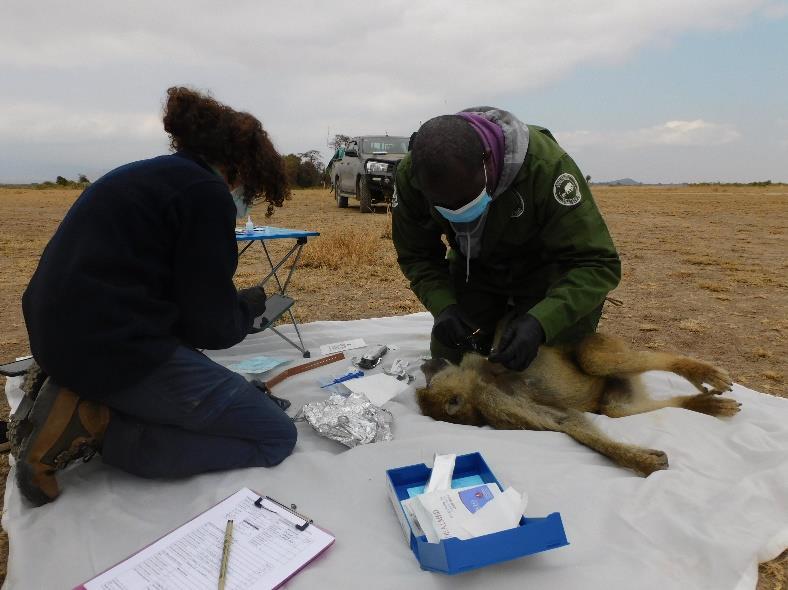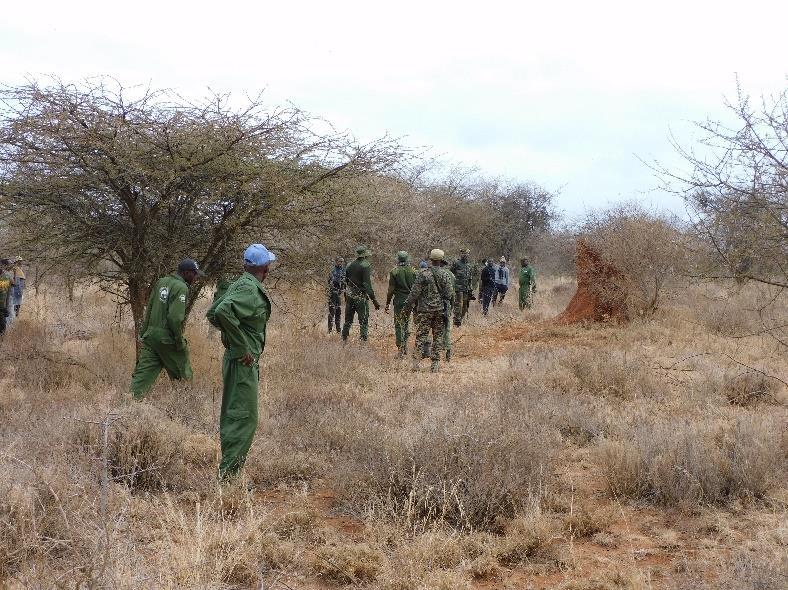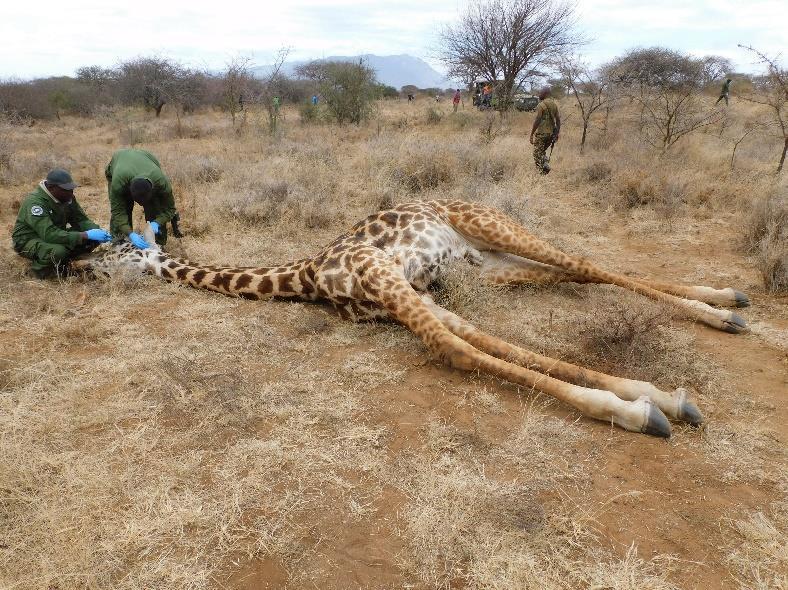SWT/KWS AMBOSELI MOBILE VETERINARY UNIT
AUGUST 2025
3 Cases in August 2025 1 HWC Case 1 Giraffe Case
August Report by Dr. Kariuki Edward
The Southern Conservation Area and the Amboseli Ecosystem experienced a hot and dry period in August 2025. Three cases were attended, and all were successfully handled. These cases involved the collaring of baboons to assist the Amboseli Baboon Research Project, treatment of a serval cat and relocation of 35 giraffes of 50 that had become enclosed on recently purchased and fenced farms in Kajiado.
Acknowledgement
We thank Sheldrick Wildlife Trust (SWT) for material support and Mobile Unit funding. KWS Staff, MWCT, and BLF rangers for the field support and the monitoring of distressed wildlife in areas of interest are highly acknowledged and appreciated.
Case Details
1-Aug-25 Baboon Amboseli NP Technical Cases Fifteen baboons were immobilised, sampled, and four were fitted with collars Task Successful
20-Aug-25 Serval Cat Kimana Sanctuary Natural Causes A lame serval cat was reported. The cat couldn’t raise or walk Prognosis Poor
26-Aug-25 Giraffe Kajiado Human Wildlife Conflict
Over 50 giraffes were enclosed in about 5 private farms. The farms are recently purchased, and the giraffes are inside and can't access water Task Successful
SWT/KWS Amboseli Mobile Vet Unit Treatment Locations
August 2025
August 2025
Baboon Collaring Amboseli National Park
A research permit was issued to Amboseli Baboon Research Project by KWS and WRTI. The project was allowed to dart a maximum of 40 and collar a maximum of 20 baboons in 2025. During August 2025, AMVU and the Baboon Project researchers captured 15 baboons for routine sampling and collar replacements. Additionally, a heart monitor was fixed in two baboons.
Immobilisation, examination and collaring
Telazole (1ml/25mg; Tiletamine and Zoalezipam) helped in the restraint of fifteen (15) baboons. All baboons attained full immobilisation in 3-8 minutes.
Fifteen baboons were immobilised, sampled, and four were fitted with collars using VHF (three) and GPS (two) devices. Data collected included body mass, long bone measurements, tooth casts, hair samples, and blood samples for genetic analysis. The immobilised baboons appeared in good body condition and weighed within the normal range. The dental formulae and examined lymph nodes were of normal size, though a few were slightly enlarged. Enlarged lymph nodes were attributed to females during active menstrual periods or males with minor wounds or injuries. Some males had broken teeth and mildly swollen lymph nodes. These conditions confirmed the health and suitability of the baboons for collaring. Cardiac monitoring devices were attached to four female baboons. A few baboons exhibited ectoparasites, such as ticks and mites. .
Serval Cat Natural Causes Imbirikani
A lame serval cat was reported in Marula in a tomato farm. The cat couldn’t get up or walk
Immobilisation, examination and treatment
The serval cat was successfully immobilised using 2mg of Ketamine HCl and attained full immobilisation in an average time of 5 minutes.
A systemic antibiotic, Amoxicillin 3ml, and Dexamethasone were administered via intramuscular injection to prevent secondary bacterial infections that could develop from the darting wound or due to stress from immobilisation.
The cat was allowed time to wake up without any reversal or drug administration.
Prognosis
Prognosis is grave.
Giraffe
Human-Wildlife Conflict
Over 50 giraffes were enclosed in about 5 private farms in Kajiado. The farms are recently bought, most are enclosed with fences, and the giraffes inside can't access water.
Relocation
Following the recommendations of a wildlife assessment report on the farms in Kajiado, a team of 60 composed of KWS rangers,BLF, SORALO and the Amboseli Mobile Veterinary team were tasked to drive wildlife from the fenced farms in Kajiado Central into Ramat wildlife Conservancy.
For the majority of the giraffes, designated fence areas were opened, and the giraffes were pushed out with vehicles and human labour
The exercise ended successfully with about 15 giraffes moved into Ramat and about three farms with 20 giraffes registered as Sanctuaries.
Maili Tisa, Namanga - Kajiado




















